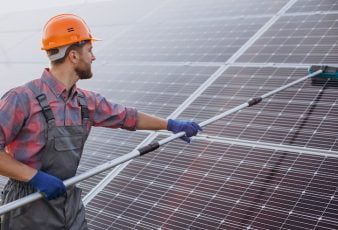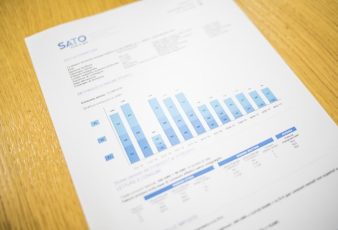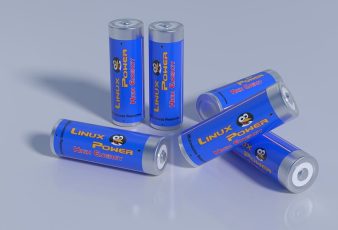Energy efficiency is unquestionably instrumental in building a sustainable blueprint for our planet’s future. Energy efficiency has taken center stage in the face of rapidly depleting resources and heightened environmental concerns. By adopting energy-efficient practices and technologies, we curb energy usage and, in turn, maintain a check on the escalating power costs.
This article offers an in-depth exploration of energy efficiency, explaining its impact on reducing power costs and highlighting how to seamlessly incorporate it into our daily lives. The broader implications on the environment and society will also be stressed. The forthcoming discourse presents a comprehensive guide to understanding and harnessing energy efficiency to mitigate high power costs and champion environmental sustainability.
What Is Energy Efficiency?

Let’s begin by addressing an essential question—what exactly is energy efficiency? Simply put, energy efficiency is the practice of using less energy to perform the same task. It emphasizes optimizing productivity while curtailing energy waste. The underpinning objective is to maintain—or even enhance—the comfort and functionality we are accustomed to but do so by consuming fewer resources.
There are many ways to visualize energy efficiency in practice. Consider everyday household appliances such as fridges, dishwashers, or air conditioners. While these are indispensable amenities in most residences, they can be significant power guzzlers. Energy-efficient versions of these appliances operate with the same effectiveness but consume significantly less electricity.
The Energy Efficiency Ratio (EER) holds substantial weight in energy efficiency. It’s a metric that calculates the energy efficiency of devices by comparing the cooling capacity to the power input. A higher EER implies less energy consumption during operation, signaling a superior level of energy efficiency.
Moreover, energy efficiency extends beyond the domestic sphere—it’s a pivotal strategy to conserve our dwindling resources on a global scale. Every kilowatt-hour conserved by employing energy-efficient devices is one less kilowatt-hour than our power plants need to generate, which impacts our environment considerably.
The Relationship Between Energy Efficiency And Power Costs
The intricate interplay between energy efficiency and power costs is undeniable. Fundamentally, the more energy-efficient an appliance or system is, the less electricity it consumes to function. Consequently, this leaner consumption results in lower power costs. Over time, the accrual of these more minor savings results in a substantial reduction, evident in the monthly or yearly energy bills.
Let me paint a picture to illustrate the point at hand – imagine a building illuminated solely with LED light bulbs instead of traditional incandescent or halogen light bulbs.
While the light emitted by the LED bulbs remains equally potent, the power consumed is significantly less. In this way, achieving the same, or even improved, outcomes with less power consumption is possible.
Another crucial aspect of this relationship is the Energy Star rating. This globally recognized label denotes the energy efficiency of products, systems, and infrastructure. Devices displaying an Energy Star rating use 20-30% less energy than their non-efficient counterparts, which can lead to tangible reductions in power costs.
Now, let’s not disregard the elephant in the room – energy-efficient solutions can sometimes come with a higher upfront cost. For instance, a state-of-the-art, energy-efficient air conditioning unit might cost more initially than its less efficient counterparts. However, the substantial long-term savings in power costs usually make the initial investment worthwhile, hence the adage, “You have to spend money to make money.”
Ways To Improve Energy Efficiency In Your Home

There are numerous ways through which energy efficiency can become a reality in our everyday lives. The initial step to reduce our power costs begins right at the home front.
Insulation plays a pivotal role in controlling the interior climate of homes. Proper insulation prevents heat from escaping during winter and barricades warmth during the summer, reducing reliance on heating and cooling systems.
A move towards energy-efficient appliances and lighting is yet another means of fostering energy efficiency. Switching to LED bulbs, for instance, can drastically reduce the power to illuminate your space. Indeed, installing energy-saving devices involves an upfront cost. Still, the long-term gains of reduced power costs make it a beneficial investment.
Smart meters and energy monitors are modern innovations enabling consumers to better manage their energy use patterns. These devices provide valuable insights into energy usage patterns, helping to identify areas of excessive power consumption and allowing for the implementation of energy-saving measures.
As humble as they seem, small day-to-day habits contribute significantly to energy efficiency. Turning off lights when a room isn’t in use, unplugging gadgets when they’re not being charged, and adjusting the thermostat by a couple of degrees, for instance, all add up to create a substantial positive impact on energy usage over time.
Energy Efficiency Initiatives And Policies That Encourage Lower Power Costs
Various governments worldwide have recognized the importance of energy efficiency in sustainable resource management and cost control. They have initiated various policy measures and initiatives to promote energy-efficient practices.
One such initiative is the provision of tax rebates to homeowners who integrate energy-efficient systems into their residences. Some policies encourage manufacturing companies to transition towards producing energy-efficient appliances by offering them intriguing incentives.
Let’s explore an Australian context – the Victorian Energy Upgrades program. This initiative incentivizes households and businesses to invest in energy-efficient products. Ultimately, the program has spurred substantial energy savings, benefitting consumers with considerably reduced power costs.
In South Australia, the Green Homes Program, which offers grants to homeowners keen on installing solar PV systems, batteries, and energy-efficient electric appliances, has proved to be a successful model. The program has resulted in reduced power costs and enhanced environmental sustainability.
Measuring The Impact Of Energy Efficiency On Power Costs

Monitoring energy usage is the first stride in embracing energy efficiency. Only through understanding our power footprints can we envision and manifest effective strategies for enhancement.
There are numerous ways to gauge your household’s energy consumption. From reading your electricity bill thoroughly to noting the energy consumption of individual appliances, you can build a comprehensive picture of your home’s energy use.
It’s possible to calculate the potential savings from becoming more energy efficient from this baseline. This could be as simple as determining how much power a specific appliance uses and how often it’s used or as complex as implementing smart devices that monitor and control energy usage throughout the home.
Yes, power costs are rising. But by implementing energy-efficient measures effectively, we can work towards mitigating this surge. Modern tools and applications are readily available to help track, manage, and curtail our energy usage.
Conclusion
In closing, understanding and employing energy efficiency is more than a sound financial strategy—it’s a requisite paradigm shift to sustainable living. The benefits are multifold. By increasing energy efficiency, we’re not just reducing our power costs and conserving renewable resources; we’re nurturing a more sustainable environment in which to thrive.
Consequently, energy efficiency becomes critical, empowering us to tackle the growing surge in power costs while concurrently addressing global ecological concerns. The journey toward energy efficiency might seem daunting initially, but as we’ve unearthed throughout this article, even the most minor steps can lead to remarkable progress over time. It’s time we champion energy efficiency for a secure, affluent, and sustainable tomorrow, which lies in its understanding and application.
Read Also:




























